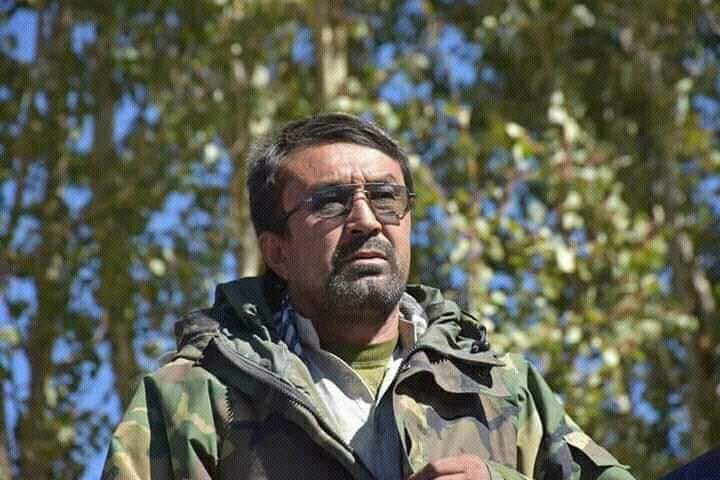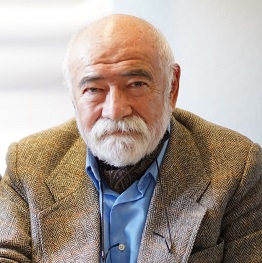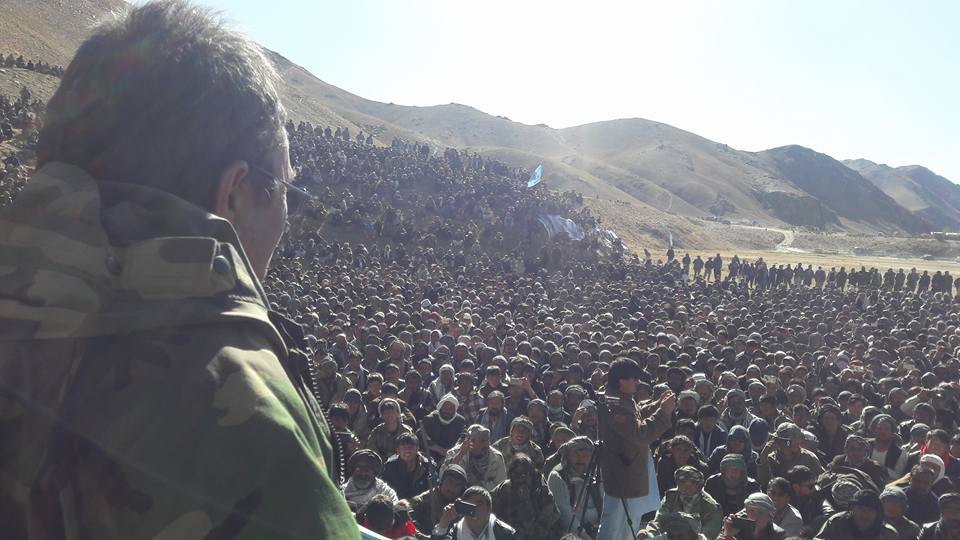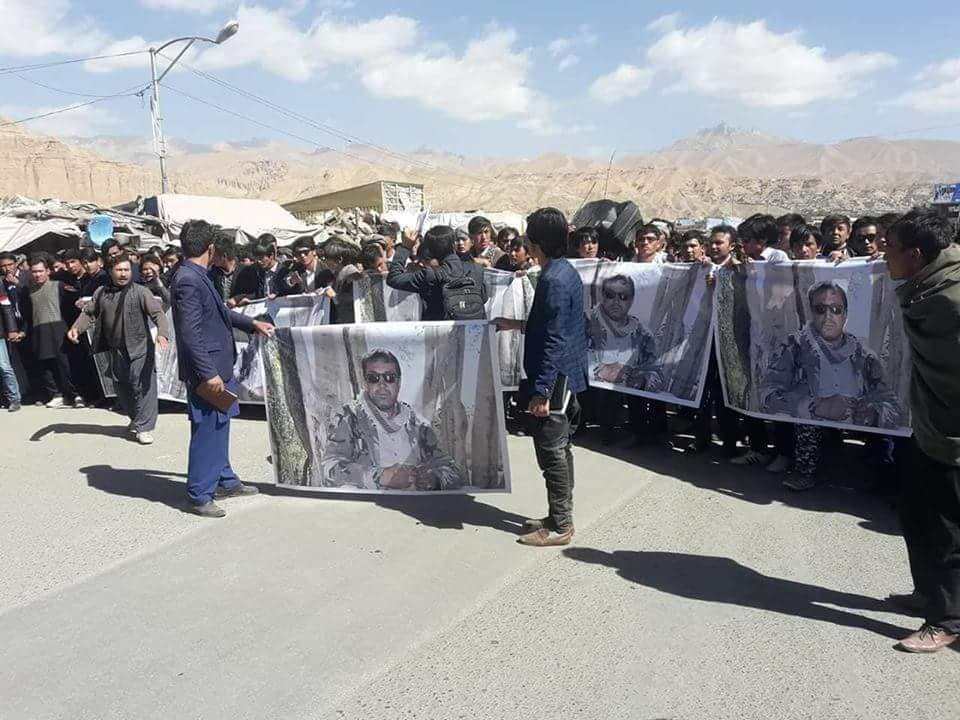Recently, the US daily, the Wall Street Journal published an article titled, “Afghanistan Braces for Worst as US Troops Withdrawal Accelerates.” The paper talks about the situation in the country and then highlights a local commander, Abdul Ghani Alipoor, a Hazara from central Afghanistan who commands a group of fighters numbering about 500. He is quoted as saying that he could increase the fighters to 5000 in a short notice. The paper gives the views of some Afghan and Taliban officials about the possibility of violence in the future in the event of American withdrawal from Afghanistan. The paper singles out Alipoor as the Hazara commander who according to some government sources fights against Pashtuns and is involved in illegal activities against the people.
Who is Alipoor and what he does?
First, a bit of a background as to why the Hazaras need a popular force like Alipoor’s especially after the US untimely and hasty withdrawal from Afghanistan and its dealing with the Taliban terrorists who during their takeover of Mazar-e-sharif in 1998, massacred thousands of Hazara civilians.
Secondly, since the uprising against the extremely oppressive Pashtun leader Abdur Rahman who at the behest of the British Raj started a genocidal war against the Hazaras in the 1890s, more than 60% of the Hazaras were massacred. The remaining ones were driven out of their lands and some of them were sold to slavery. Only a small portion of the land mostly the central highlands called Hazarajat or Hazaristan were left to them. Not only that, Abdur Rahman left a terrible legacy of racism, discrimination and enmity among the people especially with respect to Hazaras. One of the measures, taken by Abdur Rahman that sowed the seed of conflict and discontent that continues to date, was the confiscation of the land and the right to use the Hazara hills, mountains and valleys as pasture land for the nomadic Pashtuns. Each spring, an army of nomads descends on the central highlands and against the will of the locals graze their mountains and valleys and, on their way, back and forth trample the cultivation of the people. Successive Pashtun governments have ignored the Hazara pleas for justice. During the insurgency against the Soviets and their installed regimes in the 1980s and also in early 1990s, the locals refused to allow the nomads’ seasonal invasion. When the Taliban, which are overwhelmingly Pashtun, took over, they helped the nomads to reenter the Hazara regions. After the Taliban downfall post 9/11, each year, the nomads return, and the fighting with the locals resume ending up in death and destruction. Once again, the local pleas have fallen on deaf ears of the Pashtun governments. When the Taliban reentered in certain areas, the first group that they started to fight against was the Hazaras. Throughout the years that the international forces were in Afghanistan, the Taliban terrorists targeted the Hazara population wherever they had access to them. The roads between Kabul and the central regions have been death traps for the Hazaras. The central government failed to secure the road thru the Pashtun areas and the Taliban have made it a routine practice to search passing vehicles and single out those that are suspected as government employees and civil servants. During the spring when the nomads return to the central highlands the Taliban provide protection for these invaders. Since the government does not protect the local population, they have formed the armed protection force. This local resistance force is not an aggressive but defensive entity, protecting the defenseless people in the region.
There are armed bands among all ethnic groups in Afghanistan, even in the capital. The fact that there is no fighting going on in their regions is that they do not have the yearly nomad invasion or the Taliban are not a threat to their safety and security. In places where the Taliban pose a threat to the people, there have been resistance and fighting.
In fact, the Hazaras are the least armed group in the country. When the US and NATO forces entered Afghanistan, the Hazaras naively believed that the Western forces, under the US command would bring peace and stability to Afghanistan and there is no need for arms and ammunition. They also believed that centuries of neglect and discrimination would end and that billions of dollars in aid money that was poured into Afghanistan will also benefit every ethnic group in an equitable fashion. That was not to be, as the Hazaras and indeed the rest of the people of Afghanistan soon realized most of the money was spent on areas that were at war with the coalition forces. The peaceful regions of the central and northern Afghanistan were totally ignored giving the impression that it pays to wage a war and insurgency and that peace has no dividend even in the eyes of the international community.
Taliban From Obscurity to Prominence
The coalition forces especially the US let themselves be duped by Pakistan’s duplicity. They let Pakistan manipulate the situation and play a double game of supporting the Taliban and paying a lip service to the coalition forces. As a result, the Taliban, once on the verge of total surrender were given shelter, training, and assistance to grow into a formidable force that after 19 years of hit and run tactics from across the border, forced the US to agree to a direct negotiation with the group. They reached a so-called agreement that the US forces will leave Afghanistan and the Taliban will not let the country be used by any foreign terror groups against the US. President Trump announced that he will reduce the US presence by the end of the year to 2500 troops. However, the Taliban have not kept their end of the bargain and Al Qaeda and other foreign terror groups are still embedded with the Taliban and are operating in Afghanistan. Worse yet, the US forced the Afghan government to free nearly 6000 Taliban prisoners from jail, some of them on death row. They rejoined the Taliban outfit and swelled and strengthened the rank of the terror group. For Afghans, the US deal with the Taliban has proved disastrous because it gives legitimacy to a terror group and gives Taliban a green light that as long as they do not attack American soldiers, they can do what they want. As a result, after the agreement was signed on February 29, 2020, there has been a steady increase in violence across the country. Not only that, the Taliban want to use the agreement as the basis for the so-called intra-Afghan dialogue that started on September 12, 2020 and over two months have passed without any progress. That agreement has no place with the Afghan government as they were not a party to the deal. The negotiations were carried out with no involvement or consultation with the government so it has no place in the process.
The Taliban seemingly feeling stronger and bolder are opting on a delaying tactic. They use brute force in the field with an increase in violence across the country. They have taken some bold attack even on the capital and other major cities, blocking highways and choking cities. They are hoping to weaken the Afghan government even further and seems not to be interested in negotiations or reaching an agreement.
On the other hand, there seems to be no change in the Taliban position or attitude to the vital issues of concern for the majority of Afghans. If anything, there will be a deterioration of the situation in the future and there will be more violence, more bloodshed and more arm groups popping up. When the US leaves a void as it did after the Soviet withdrawal from Afghanistan, others especially regional powers will be more than willing to fill that void. The vulnerable people such as the Hazaras who are disillusioned and disappointed by the hallow promises of the West about democracy, human rights, rule of law, freedom, equality, etc. will have to take up arms for their survival. When people are driven to the wall, they have no choice but to fight with whatever means at their disposal or to grasp the first hand that is extended to them. Fighting for one survival and self-defense are two tenets of life allowed under any law anywhere from time immemorial.
Alipoor is the commander of a popular resistance force who defends the local population against the Taliban and the nomads that are one and the same as far as the Hazaras are concerned. In this murky environment that dog eats dog and the vicious wolves are on the prowl, one can expect more Alipoors in the future to secure the safety of people.



